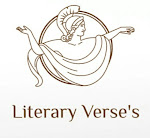The Contract of Marriage
Marriage a la Mode
In the heart of London's aristocratic circles, Edward and Alice solemnly exchanged vows. Their union was not born of passion but of familial strategy. Edward, heir to a substantial fortune, and Alice, the daughter of esteemed lineage, were wed to fortify their families' influence.
Their wedding was a grand affair, adorned with the opulence befitting their status. They smiled dutifully for the cameras, radiating the image of blissful harmony. Yet beneath the surface, theirs was a marriage of convenience, tethered more by obligation than affection.
Edward immersed himself in business pursuits, tirelessly striving to expand the family empire. Alice, adorned in the latest fashion, navigated the intricate social landscape with practiced grace. They inhabited the same elegant home but led separate lives, their conversations constrained by societal decorum.
As the years unfolded, their days became a series of orchestrated events—charming smiles at public gatherings, meticulously planned soirées at their stately residence. Their marriage, though outwardly flawless, concealed a quiet melancholy—a longing for a connection that remained elusive.
Their evenings together were a tableau of polite exchanges, punctuated by long stretches of silence. Edward spoke of financial ventures and societal aspirations, while Alice recounted the superficial engagements of high society. Rare were the moments when their hearts truly met in understanding.
Their home, adorned with priceless art and heirlooms, echoed with the hollowness of unspoken desires. In the dim light of their chambers, they pondered the choices that bound them in a union devoid of passion, fueled by duty alone.
And so, Edward and Alice navigated the labyrinth of aristocratic expectations, each day a delicate dance of appearances and obligations. They maintained the facade of marital bliss, concealing the truth of their hearts—a truth buried beneath layers of tradition and familial obligation.




